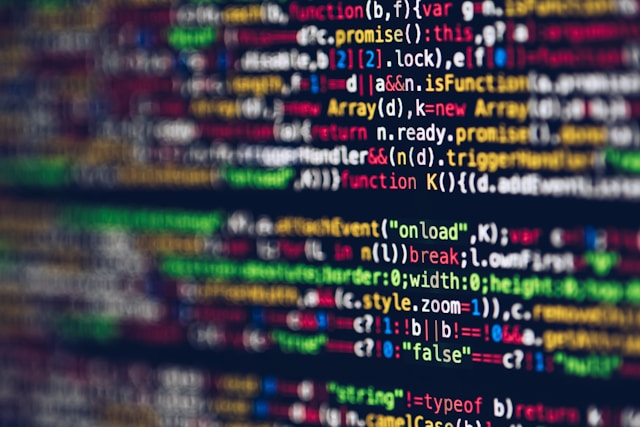Master the fundamentals of python programming with this beginner-friendly guide to variables! learn how to store, name, and manipulate data in your python programs. explore variable naming conventions, data types, and practical examples to get you started coding in python.
Ever wondered how computers store information? In Python, variables are your secret weapon for taming data. They act like labeled boxes, holding all sorts of information you can use throughout your programs. Let's dive in and learn how to create, use, and manipulate variables like a Python pro!
Variables
Variables are containers for storing data values.
Creating Variables
Python has no command for declaring a variable.
A variable is created the moment you first assign a value to it.
Example
A variable is created the moment you first assign a value to it.
Example
x = 5 y = "John" print(x) print(y)
Variables do not need to be declared with any particular type, and can even change type after they have been set.
Example
x = 4 # x is of type int x = "Sally" # x is now of type str print(x)
Variables do not need to be declared with any particular type, and can even change type after they have been set.
Example
x = 4 # x is of type int x = "Sally" # x is now of type str print(x)
Casting
If you want to specify the data type of a variable, this can be done with casting.
Example
x = str(3) # x will be '3' y = int(3) # y will be 3 z = float(3) # z will be 3.0
Get the Type
You can get the data type of a variable with the type() function.
Example
Example
x = 5 y = "John" print(type(x)) print(type(y))
Single or Double Quotes?
String variables can be declared either by using single or double quotes:
Example
x = "John" # is the same as x = 'John'
Case-Sensitive
Variable names are case-sensitive.
Example
This will create two variables:
a = 4 A = "Sally" #A will not overwrite a
Python - Variable Names
A variable can have a short name (like x and y) or a more descriptive name (age, carname, total_volume). Rules for Python variables:
✓ A variable name must start with a letter or the underscore character
✓ A variable name cannot start with a number
✓ A variable name can only contain alpha-numeric characters and underscores (A-z, 0-9, and _ )
✓ Variable names are case-sensitive (age, Age and AGE are three different variables)
✓ A variable name cannot be any of the Python keywords.
✓ A variable name must start with a letter or the underscore character
✓ A variable name cannot start with a number
✓ A variable name can only contain alpha-numeric characters and underscores (A-z, 0-9, and _ )
✓ Variable names are case-sensitive (age, Age and AGE are three different variables)
✓ A variable name cannot be any of the Python keywords.
Example
Legal variable names:
myvar = "John" my_var = "John" _my_var = "John" myVar = "John" MYVAR = "John"
Example
Illegal variable names:
2myvar = "John" my-var = "John" my var = "John"Try it Yourself »
Remember that variable names are case-sensitive
Multi Words Variable Names
Variable names with more than one word can be difficult to read.
There are several techniques you can use to make them more readable:
- Camel Case
Each word, except the first, starts with a capital letter:
myVariableName = "John"
- Pascal Case
Each word starts with a capital letter:
MyVariableName = "John"
- Snake Case
Each word is separated by an underscore character:
my_variable_name = "John"
Many Values to Multiple Variables
Python allows you to assign values to multiple variables in one line:
Example
x, y, z = "Orange", "Banana", "Cherry"
print(x)
print(y)
print(z)
Note: Make sure the number of variables matches the number of values, or else you will get an error.
One Value to Multiple Variables
And you can assign the same value to multiple variables in one line:
Example
x = y = z = "Orange" print(x) print(y) print(z)
- Unpack a Collection
If you have a collection of values in a list, tuple etc. Python allows you to extract the values into variables. This is called unpacking.
Example
Unpack a list:
fruits = ["apple", "banana", "cherry"] x, y, z = fruits print(x) print(y) print(z)
Output Variables
The Python print() function is often used to output variables.
Example
Example
x = "Python is awesome" print(x)
In the print() function, you output multiple variables, separated by a comma:
Example
x = "Python" y = "is" z = "awesome" print(x, y, z)
You can also use the + operator to output multiple variables:
Example
x = "Python " y = "is " z = "awesome" print(x + y + z)
Notice the space character after "Python " and "is ", without them the result would be "Pythonisawesome".
For numbers, the + character works as a mathematical operator:
Example
x = 5 y = 10 print(x + y)
In the print() function, when you try to combine a string and a number with the + operator, Python will give you an error:
Example
x = 5 y = "John" print(x + y)
The best way to output multiple variables in the print() function is to separate them with commas, which even support different data types:
Example
x = 5 y = "John" print(x, y)
Global Variables
Variables that are created outside of a function (as in all of the examples above) are known as global variables.
Global variables can be used by everyone, both inside of functions and outside.
Example
Create a variable outside of a function, and use it inside the function
Global variables can be used by everyone, both inside of functions and outside.
Example
Create a variable outside of a function, and use it inside the function
x = "awesome"
def myfunc():
print("Python is " + x)
myfunc()
If you create a variable with the same name inside a function, this variable will be local, and can only be used inside the function. The global variable with the same name will remain as it was, global and with the original value.
Example
Create a variable inside a function, with the same name as the global variable
Example
Create a variable inside a function, with the same name as the global variable
x = "awesome"
def myfunc():
x = "fantastic"
print("Python is " + x)
myfunc()
print("Python is " + x)
- The global Keyword
Normally, when you create a variable inside a function, that variable is local, and can only be used inside that function.
To create a global variable inside a function, you can use the global keyword.
Example
If you use the global keyword, the variable belongs to the global scope:
To create a global variable inside a function, you can use the global keyword.
Example
If you use the global keyword, the variable belongs to the global scope:
def myfunc():
global x
x = "fantastic"
myfunc()
print("Python is " + x)
Also, use the global keyword if you want to change a global variable inside a function.
Example
To change the value of a global variable inside a function, refer to the variable by using the global keyword:
Example
To change the value of a global variable inside a function, refer to the variable by using the global keyword:
x = "awesome"
def myfunc():
global x
x = "fantastic"
myfunc()
print("Python is " + x)



